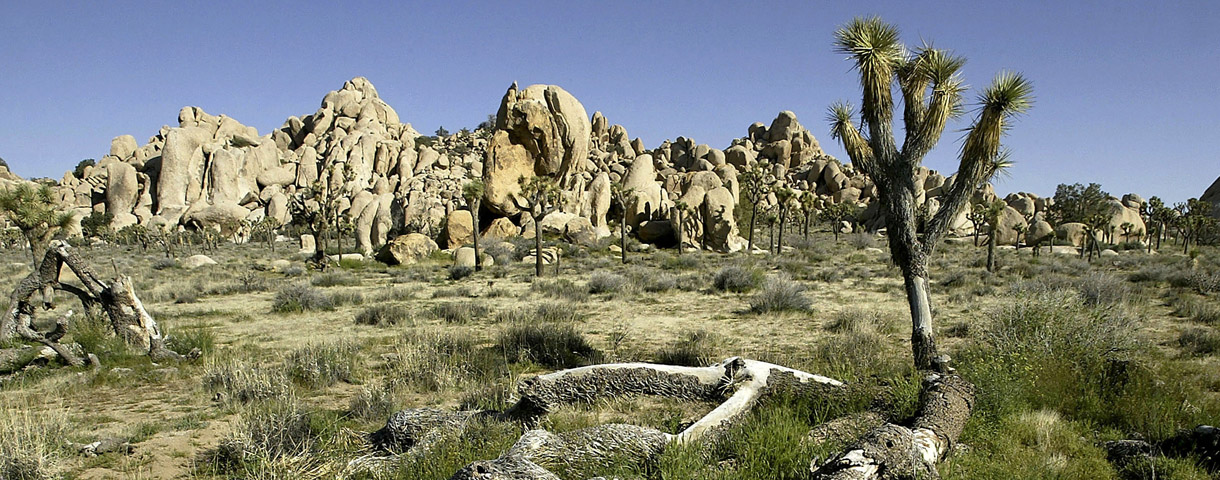Where is Joshua Tree?

What? you don’t know? Well let me tell ya! Joshua Tree is in the High Desert of the Morongo Basin in Southern California. It’s about a two hour drive from Los Angeles, going east on the 10 freeway, although it really depends on how fast you’re driving.

There might be traffic on the first leg of your drive, and wind near the last leg. You can also get stuck behind a giant Winnebago. The lanes will eventually dwindle down to one in certain areas, and it’s really best not to become frustrated. Leave your Los Angeles road rage behind you – and be very careful when passing and do so only when it’s absolutely safe. I say this because those wind gusts that come at you – just after coming onto highway 62 from the 10 – can surprise you. They are some of the most powerful in the nation. Keep both hands on the wheel and you’ll be fine. Just remember that you’re in no hurry. You’re going to the desert to RELAX!
The Park and Some Interesting Facts
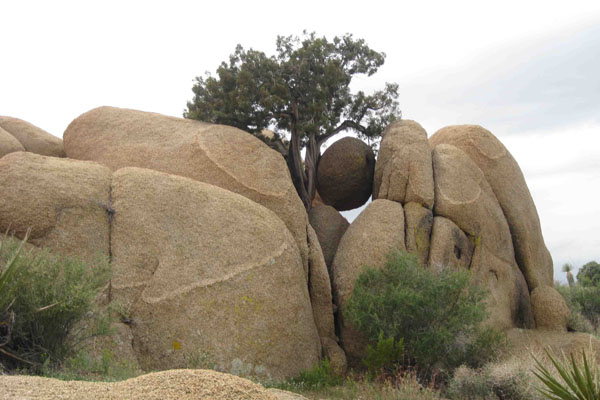
Near by is Joshua Tree National Park. Nearly 800,000 acres large, this unique body of natural resources brought together by the powers that be to intersect three of California’s ecosystems, not to mention how famous it has come to be for rock-climbers all over the world as a prime location for suicide missions, er, um, I mean, rock climbing, and camping too. I’m more of a camper. I mean, I’ll climb a few rocks for a photo op, but nothing dangerous that could break my leg or a hip, and nothing that will cause me to readjust my photo-ready blouse – most likely a T-shirt.
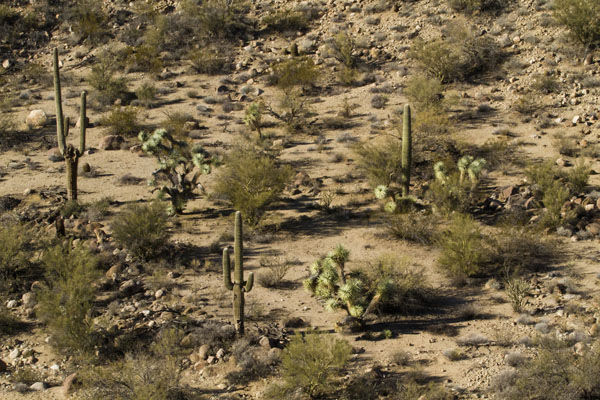
Anyway, the Colorado Desert and the western end of the Sonoran Desert make up the southern and eastern parts of the Joshua Tree National Park, while the southern boundary of the Mojave Desert runs across the northern part, but I always get confused about my NSEW when I’m there, and I am NOT one to confuse directions when I am outdoors. I usually have that problem when I’m indoors, like inside a building. I suppose it is because of the way the grade of the land is laid out there. You feel like you are going “up” when you’re going south, and the basin of the town of Joshua Tree feels set “below” the National park when you arrive via 29 Palms Hwy (also known as Hwy 62). You’ll see what I mean once you get there.
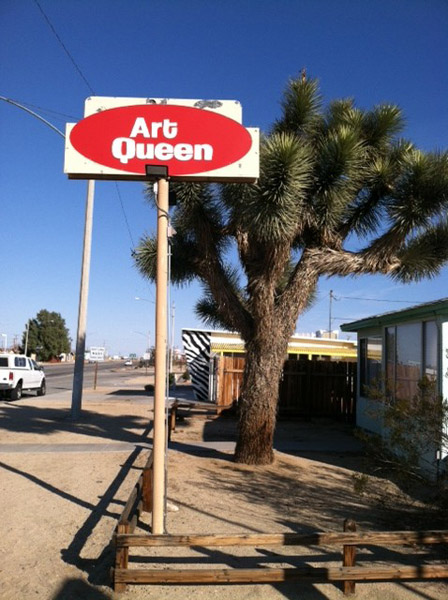
After more than 15 years of frequenting the place, it still feels that way to me. For instance, I usually stay south of the 62 and will inevitably say things like, “I’m going to go down to the pub for a hamburger.” Or, “I’ll be down at Art Queen if you need me.” Get the picture?
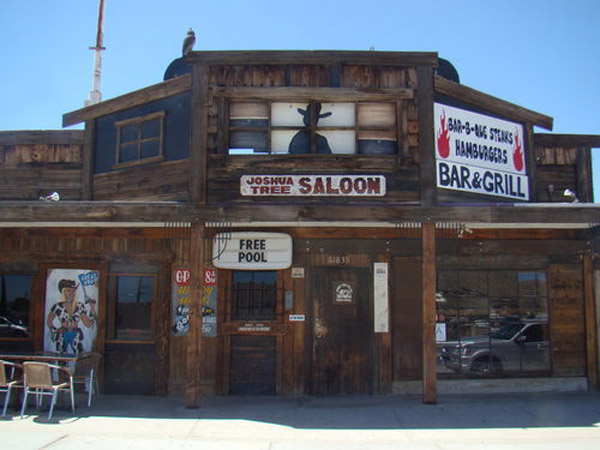
There’s also an interesting area of the park called the “Transition Zone,” where two of the major deserts meet each other: the Mojave and the Sonora. In this zone the plants of the two deserts mingle, creating a hybrid field. Even though Joshua trees still grow there, the trees are not very thick and lush, as you would expect to see from Joshuas in other parts in the park. Being in this zone, you will also unexplainably be able to read people’s minds just by shaking their hand. Don’t ask me. It’s weird I tell ya!
Why Joshua Tree?
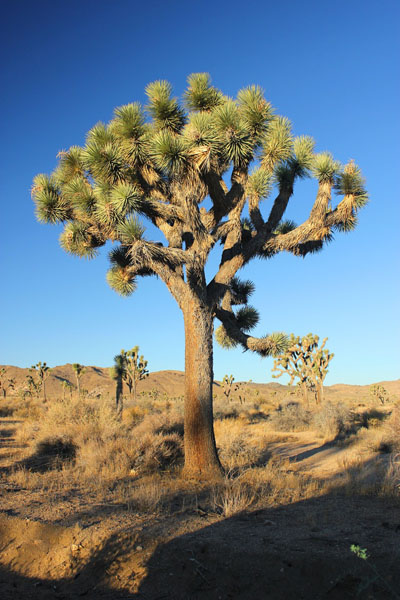
How can I make this the shortest story possible? Knowing me, it won’t turn out that way, because I have to start with my love of deserts since I was a little girl. No not those deserts, like cake and pie. Those came later (obviously).
Before Morongo
My parents once took our little family on one, and I mean one road trip ever. It was to see some family whom I’d never known we had, which was on my father’s side – a couple that lived in Tucson, Arizona. They were a little older than my parents. I wish I could remember their names. Maybe because we never saw them since, or heard about them afterwards. However, I do have a photograph! I’ll have to fish that out and post it here on this page. Then I can delete these last two sentences.
While we drove out to Tucson from LA in my mother’s little yellow Chevy Camaro, I took in all the sights through the small triangular window by the back seat, and I just fell immensely in love with the desert landscape. As morose as I was, even back then, I made a decision that I would one day grow old and die in a desert.
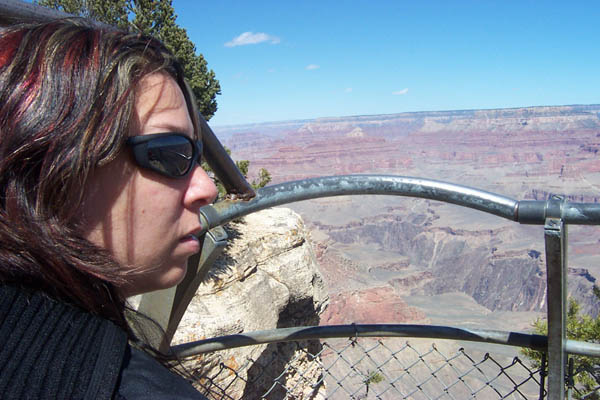
Whatever my strange fantasy was at the time, all I knew was that this scenic drive was hypnotizing me and soothing to my nerves, as I was a highly anxiety riddled kid. The mountains and formations of the red rocks, the cacti and the vast open space drew me into a kind of meditative place that I never wanted to leave. In fact, at the end of the week-long stay at our family’s house in Tucson, I put up such a fuss about leaving my parents had to literally peel me off the threshold of the door way when it came time to get in the car and go, which was completely out of my character. I really wasn’t known for tantrums.
My mother began to cry as well. She didn’t want to leave either. And my dad got teary-eyed. He wished he didn’t have to go back to work. He loved Tucson, and the entire way home we all started talking about how we could drop everything in Los Angeles and move to Arizona. Everyone but my brother was on board.
I went back to Phoenix many times afterwards, in my 20s. The band I played with at the time picked up a following there, especially at ASU, and so we played pretty frequently there. I also showed in a couple galleries there after that. I loved driving to Phoenix. I loved the desert. Truthfully, I had only heard about Joshua Tree, but never knew about Joshua Tree. I remember it was the name of a recent album that U2 put out, but the only one motivation I had to go out there was to see Noah Purifoy‘s property that my long-time friend, Mark Steven Greenfield had been telling me about. He said it was “just my ‘thing,'” and it most certainly was! I saw it before the fire, and I will more about that later.

1999
In 1999 I clung onto the love of my life, like one of those clip-on koala bear thingies. Most everyone knows him as “mjp” (Michael Phillips), and he had been telling me all about Joshua Tree for over a year, back when we were merely friends. He would email me pictures of giant boulders and talk about a house where he stayed, shared with his ex-girlfriend. It was adjacent to the National Park border and pretty incredible, but from the pictures, I had no idea of just how large these boulders really were in real life.
Then, one day, he took me there. That was when everything changed for me.
I should back up a little. We were on our way back from Las Vegas. Both of our parents were living there at the time and we were driving back from a family tragedy. mjp’s step father had just passed away and we were dealing with all of the things you have to deal with when something like that happens. We drove back in the evening and it was only logical to stop for the night, so he took me to the cabin, and of course it was pitch black. You couldn’t see in front of your face.
Once the lights were on inside the cabin, I was able to see inside, but it wasn’t until the morning when everything outside was revealed to me. I woke up and nearly pooped my pants! It was just like nothing I had ever seen before!
After that, we made sure we went out there often. We even made a plan that we would one day buy a place so we could grow old and die out there. One day, you know, when we could “afford” it.
The Hot Springs?
Oh yeah, there’s natural mineral springs in the park! I bet you didn’t know that. Cottonwood Spring Oasis was one of the best kept secrets in Joshua Tree National Park, until this very instant! No, not really. It has not only been listed on the National park website for a while now, I just linked to it on About.com.

This spring was used by the Cahuilla Indians for thousands of years, who left mortars and clay pots in the spaces around the springs. The wells are about seven miles northwest from the southern entrance. Walk there if you’re not a couch potato. Or disabled… I’m sensitive to both those with disabilities and those that are just plain lazy (because I am both of those things).
Watch out for the Animals!
Joshua Tree is home of some of the coolest, strangest, and most frightening animals (depending on your view, that is) you have ever seen, or didn’t see! That’s why you need to be mindful. You certainly don’t want to accidentally step on a rattlesnake. But the truth is, it’s pretty unlikely that you would.

Snakes are rarely seen because they are super dooper camouflaged and that is so we don’t disturb them or scare them. Rattlesnakes have a bad rep, and it’s kinda unfounded. They are actually pretty mild mannered creatures and they really don’t want to have anything to do with you. First of all, they know you are too big to be prey on. Second of all, they just want to go about their daily beeswax, and find a tasty mouse, or coil up in the sun, or maybe under some shady bushes if it’s really hot. And third of all, you’re not all that interesting to them. Not because you’re not interesting, silly. Look at the size of their brains! They probably like to watch reruns of Three’s Company. If you don’t know what show that is, you’re too young to be reading this and should be in bed or something.
The truth is, while we are all biding our time, freaking out about getting bit by a snake – and I’m speaking strictly about myself here – the chances of getting a bit by one is hella slim. In fact, the chance of dying from a snakebite in the United States is one in 10 million. You are more likely to die from bee stings or a lightning strike than a snake bite! (Wow! Really?) And, almost half of snakebites are considered “dry bites,” meaning, no actual venom is ever injected. …So take thatscaredy cats! (Okay, okay!)
Just watch out for the baby rattlesnakes. Those things can kill ya! (What!?) Just kidding. (Whew.) Not really.
Now that I focused on snakes so much, I don’t have much time to tell you all about the other amazing animals in the desert, like the Big Horned Sheep! Those guys walk up and on top of those jagged rocks – practically sideways! And all the way to the top, and you’re like, How in the hell did you get all the way up there?? And then there are the old, old Mohave Desert Tortoise. And I mean old like 30 fricken million years old! Isn’t that old? That blows my mind. I have never actually seen one of those, but you’d think I would have. It’s not like they could have run off when I walked outside!

Now, I’m not even mentioning (damn me!) the 18 different kinds of lizards, the 23 types of other snakes, the bunnies or the Bobcats, the Roadrunners or the Quail, or those crazy tarantulas — plus so many more insects and animals. I LOVE animals! And most of these I have seen! Those bunnies are everywhere. They come out around 5:00 pm and it’s like a rabbit convention or something.
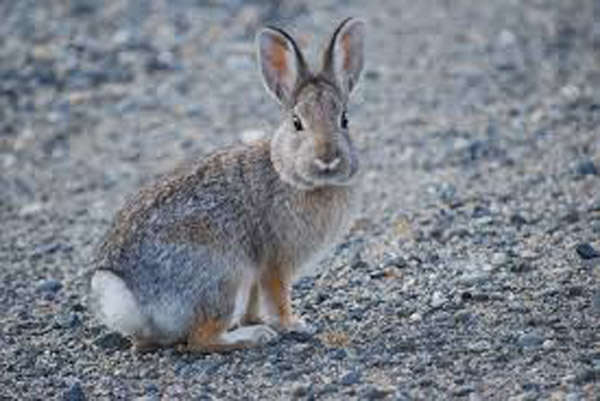
So if you like Jack Rabbits, Hares, and Cottontails, Joshua Tree is your one-stop shop. Those guys are hopping around everywhere you look. And if you’re very, very careful and quiet, you can get close to them. Not real close, but close enough for it to be a little, beautiful experience in your life that just might cure the common cold, or make you forget about some of the few pressing worries in your life – temporarily anyway.
Another creature that might let you come near them is the roadrunner – they act a bit like peacocks, only not really.
If you think I have forgotten about the Coyotes, think again!
Protected and in Danger?
So, speaking of Coyotes, let me tell you a little bit about what they have in common with the precious land they prance around on. They are both protected, and yet, they are both in danger, seemingly at all times. If it’s not one thing, it’s another, but it’s always something.
Coyotes

There is controversy in them thar hills! Coyotes have long been an enemy in the eyes of agriculture, and that industry has understandably urged “coyote control” by whatever means necessary so that potential livestock losses be eliminated.
Of course, environmentalists believe that coyotes are necessary to preserve the balance of nature, as do I! I suppose that makes me some kind of tree-hugger then. Okay, then there are the sporting people that feel the coyote is responsible for “decline in game species” (whatevs! Do we care what they think?). And biologists agree that animals that prey on livestock should be destroyed! (But that the species as a whole is not necessarily harmful because their diet is made up of “destructive” rodents.) Jesus!
As you can see, there are a lot of opinions, and with that comes a lot of A-holes, but I never thought I’d say that about biologists. Not that I did.
Luckily, there are places like Quail Springs Farm that practice coyote conservation in a way that’s sane for everyone, at least, I think so. Check them out and see what you think. It’s not a black and white world last time I checked.
The Park Land
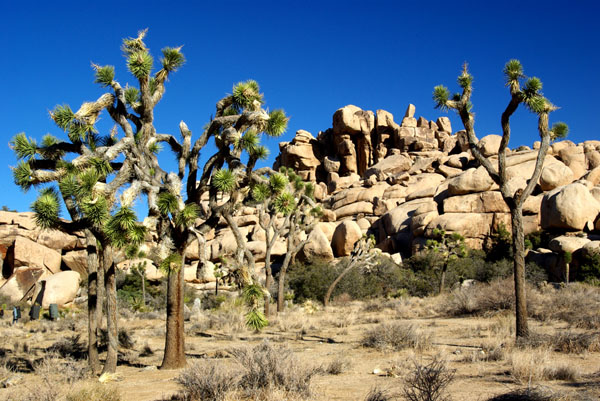
Now that we are onto conservation, I mean, let’s talk about that for a moment, shall we? We all know that our National Parks are protected land, right? No? Yes. We do. I mean, I’m telling you now. It is. They were named as National Parks, after all, for the purpose to be protected land, and that took some doing, once upon a time. This all happened in the legislation, before you were even a baby, so you wouldn’t remember, so don’t feel like you should know or anything. It’s not your fault if you don’t remember anything that happened from before you were a baby.
Anyway, the parks are then protected by another agency (not the National Parks Service) – of course, it wouldn’t be our national government without having an agency in place for another agency, right? – called the Bureau of Land Management (BLM), and luckily, these guys take managing the land and whatnot pretty seriously.
However, they are the government after all, and who wants the government watching over the trees, especially when there’s someone in office at the time that doesn’t think much of nature – maybe in the slightest? What if it’s a big mean, right-winged blind guy that’s never even seen a tree and therfore hates them? In fact, he wants to wipe them off the face of the Earth and doesn’t believe we need them to allow us to breathe. That would suck, wouldn’t it?
Well, this was why the NPCA was formed. It was formed just a couple of years after the National Parks Service was formed in the early 1900s. The founders wanted a nonpartisan entity to protect these sacred lands and felt that the national parks would need “an independent voice – outside the political system – to ensure these places remained unimpaired for future generations,” which is pretty bitchen. Plus they are a completely philanthropic, non-profit organization. So, they kinda do more than the BLM.

Eagle Mountain Landfill
All this talk about the careful watching over and conservation of protected land – yet what about when shit happens on the privateproperty after the protected property’s border line ends? Check this out. This came from the National Parks Conservation Association‘s website:
Southeast of Joshua Tree National Park, surrounded on three sides by the park’s wilderness, NPCA is fighting plans to build the world’s largest garbage dump in the Eagle Mountains. The Eagle Mountain Landfill, proposed by Kaiser Ventures, was sold to the Sanitation Districts of Los Angeles County, pending the defeat of legal challenges mounted against the landfill by NPCA and other plaintiffs. The dump would operate for 117 years, receiving 708 million tons of garbage and an intake of up to 20,000 tons per day. The dump would fill numerous undisturbed canyons and lands that are home to desert tortoise, mountain lions, bighorn sheep, and other sensitive desert wildlife and plant species. The dump would also cause air, light, and groundwater pollution in an area of the park which is currently relatively free from these maladies. In addition, the dump would increase the populations of coyotes and ravens to unnaturally high levels, which would reduce wildlife such as desert tortoise, reptiles, and songbirds and otherwise disrupt the fragile desert food chain.
You can read the pdf here: (.pdf) to find out what the NPCA’s stance was on this disgusting, alarming, heinous, vomit-inducing situation.
The Results?
Recently and FORTUNEATELY, After more than 10 years of this threat going on and on, the U.S. 9th Circuit Court of Appeals upheld a previous court decision overturning the land exchange necessary for the development of what would be the world’s largest garbage dump on the boundary of Joshua Tree National Park. The ruling is a humongous victory for the bighorn sheep, desert tortoises, the 1.3 million people who come the park, and the wonderful community!
